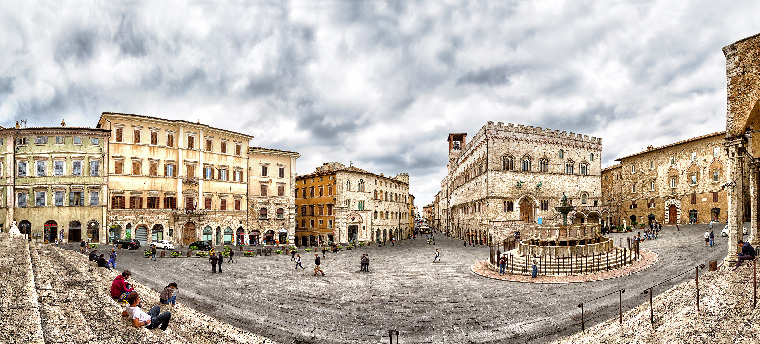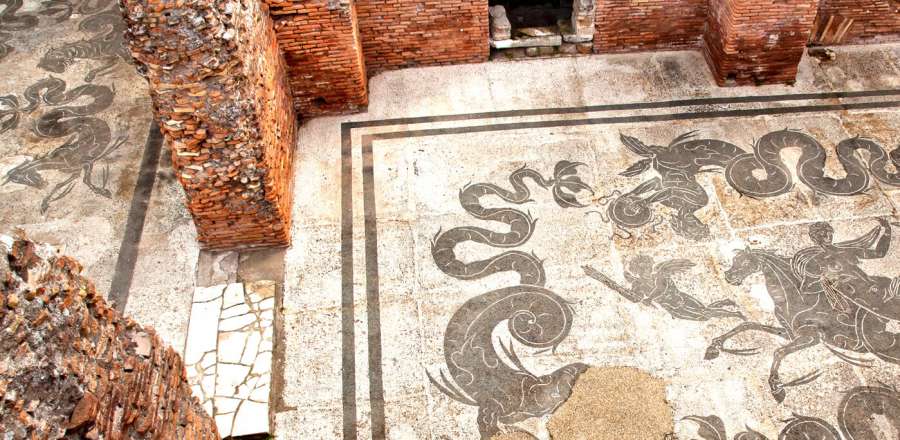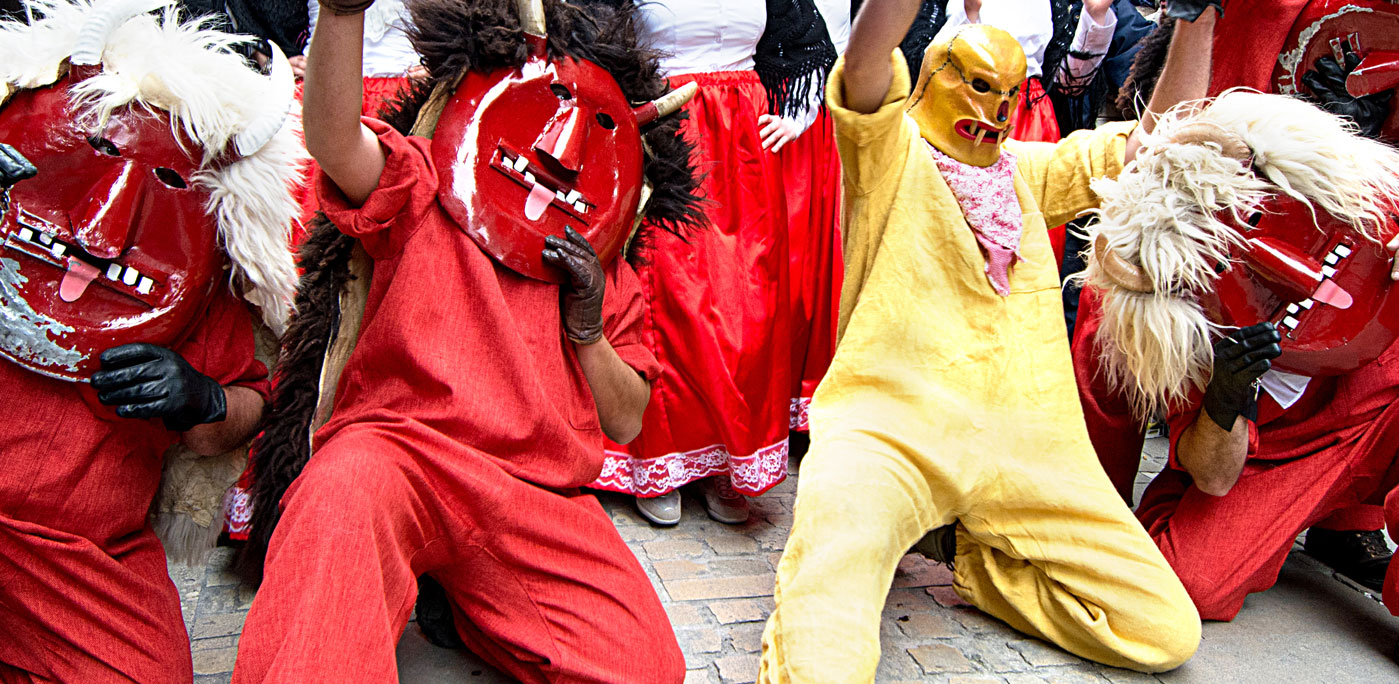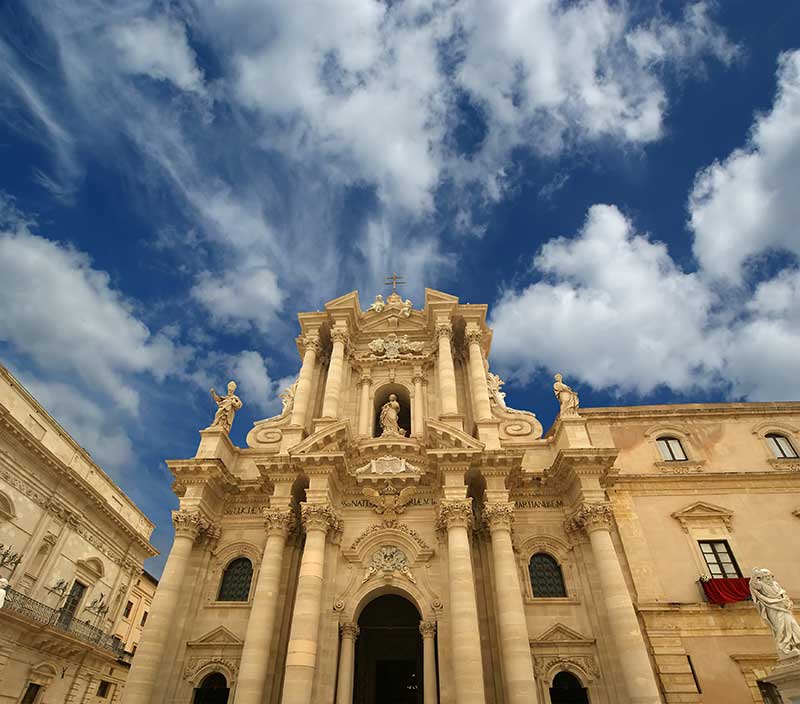Perugia is famous for two things: jazz and chocolate. In July its music festival turns the city into an enormous jazz club, drawing musicians and aficionados from around the globe. In October a sweet veil of chocolate covers the city during the delicious Eurochocolate carnival. But the real Perugia, the one the locals cherish, is packed with much more. From the ancient Etruscan gate, through its subterranean streets to the grand piazzas and national art gallery there is plenty to charm and fascinate. This chic, historic city is definitely one to add to the vacation list.
The ancient Etruscans founded Perugia, at least 300 years before the Romans came to prominence. And for centuries it was a highly strategic, economic center between the Adriatic and Tyrrhenian coasts, later becoming the capital of Umbria. Old sources even place it on a par with Siena and Florence, both famous for their power and wealth.

Today, the city sits 493 meters above sea level; the old town perched behind towering fortifications, the new town sprawling across the lower slopes. And just as Perugia’s old walls repelled her enemies, now they reject cars making the historic centre traffic free. So leave your car at the bottom of the hill, avoid the parking scrum and take the monorail, bus or escalators up to explore on foot.
Perugia’s piazzas
The mini-metro terminates just inside the city walls and from there it’s a short walk up to the centre. But rather than one central square, Perugia has two. Piazza della Repubblica and Piazza IV Novembre are linked by Corso Vannucci; a long, wide boulevard bi-secting the city. All together they form a wonderfully dynamic public space with medieval palazzi, cafes, restaurants, shops and hotels crowding around the perimeter. It’s the perfect spot to mingle in the Umbrian sunshine, chat over an aperitivo or take an early evening passeggiata walk.

There’s even a local saying that taking a stroll through the centre of Perugia along Corso Vannucci is like taking a bath. Whether it’s refreshing, cleansing, invigorating or comfortable and comforting is up to you to decide. All I know is that this is the ideal place to start exploring with art culture, churches and designer window-shopping all on the doorstep.
Promenading through Perugia
At the northern end of Corso Vannucci lies the 13th century Cathedral of St Lorenzo its facade partially covered by beautiful, but unfinished, pink and white marble diamonds. Inside, the duomo hosts the Holy Ring relic of the Holy Virgin, the remains of Popes Martin IV, Innocent III and Urban IV and paintings by local artists Pinturicchio, Perugino and Pisano. And from its steps you can also admire the wonderfully 3-tier Fontana Maggiore looking down through the centre of town.

At the other side of the petite piazza sits the crenellated Palazzo dei Priori, the 13th century seat of Perugia’s priori or first citizens. And bronze statues of a griffin and lion, both symbols of the city, frame the gothic entrance leading to Perugia’s treasures.
The piano nobile houses the spectacularly vaulted 13th century Sala dei Notari town council hall, covered in Umbria’s coats of arms and vibrant scenes from the Bible and Aesop’s Fables. It’s a stunning civic gem. Meanwhile upper floors accommodate the Galleria Nazionale dell’Umbria, one of the richest collections of paintings in the country. Artists include Renaissance painter Piero della Francesca, legendary sculptor Gian Lorenzo Bernini and local Perugino, aka Pietro Vannucci, famous for teaching the maestro Raphael. It’s a wonderful assemblage of Umbria’s best.
Practically opposite the palazzo is another of Perugia’s historic nuggets. The Caffé Sandri has been serving tea and pastries for over one hundred years and is easily the most popular pasticceria in the city. Stop off for a quick petit four or linger over a coffee and cream cake, the choice is yours!
The Corso Vannucci carries on down to Perugia’s old fortress, the Rocca Paolina. Built on medieval foundations the castle incorporates the enormous Etruscan Porta Marzia gateway and was renowned as the largest and strongest of its time. Today few parts of the fortress are still visible externally. But you can drop down into its atmospheric depths via the escalators between the centro storico and Piazza Partigiani, stopping off at different levels to explore the vaulted rooms, corridors and even an entire neighbourhood of medieval streets subsumed into the castle’s base.
But even after all that, we’ve hardly scratched the surface of the real Perugia’s magnificence. Its university, founded in 1308, is one of the oldest in Europe. The views from its walls out over the picture postcard Umbrian plains towards Assisi are simply breathtaking. Its steep stepped cobbled streets wind languidly around the walled slopes, down to tiny chapels and back up to the central piazzas. And it’s home to the Perugina chocolate factory, creator of the famous Baci sweets and the closest thing on earth to Willy Wonka’s factory!
So maybe American author Henry James was right when he advised visitors “not be in a hurry, to walk everywhere very slowly and aimlessly and observe everything that his eyes meet.” History percolates through the very fabric of Perugia, but it’s still a thriving, lively, warm city with a heart beating to a jazz rhythm. Are you ready to start packing?































